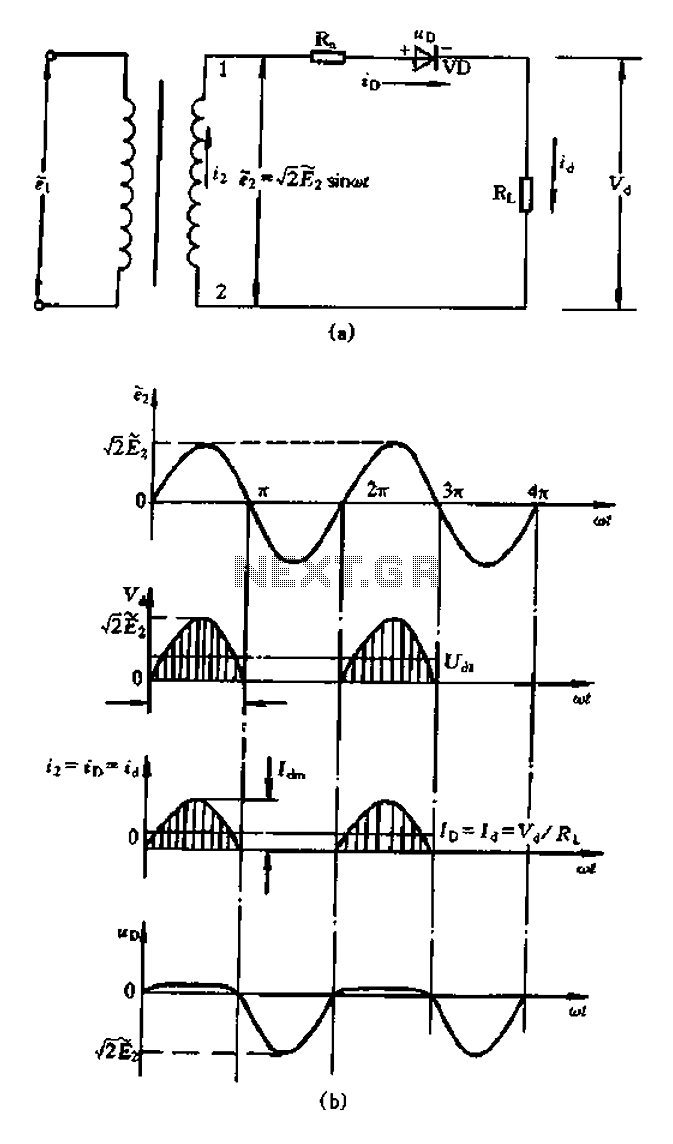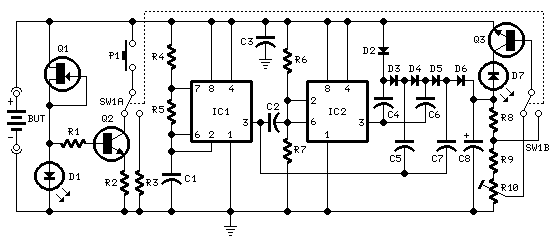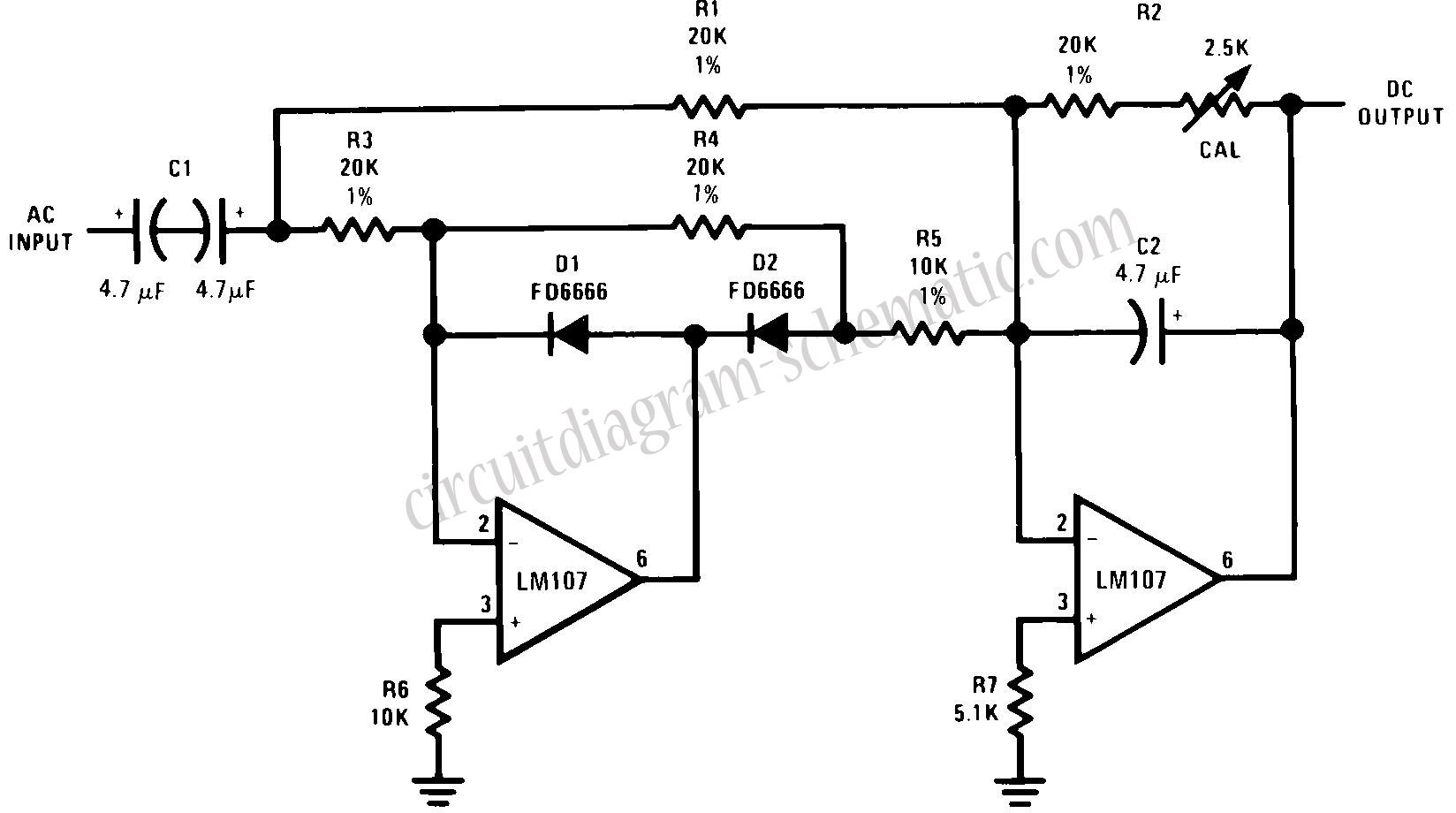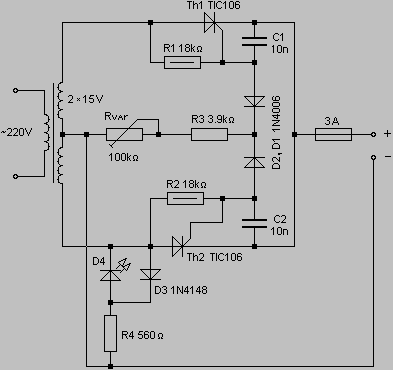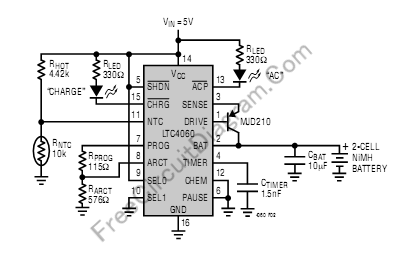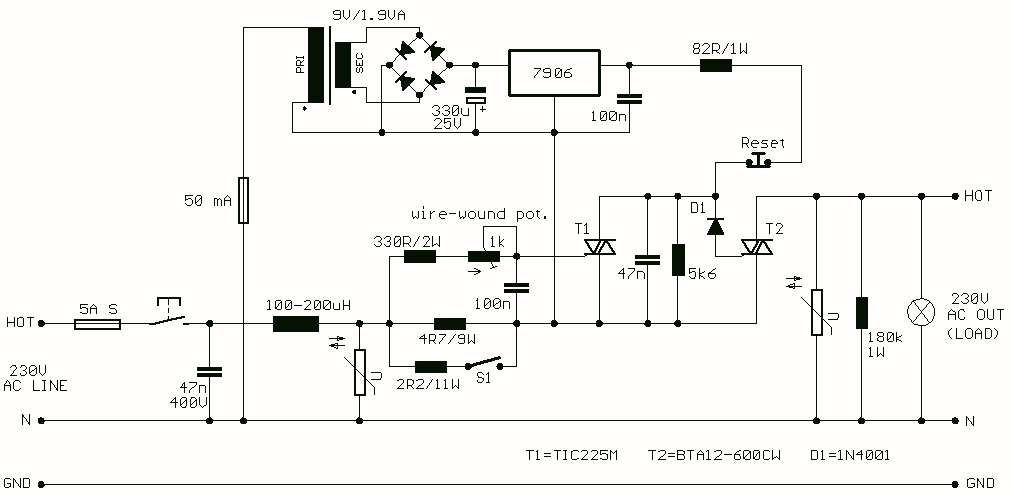
Fast half-wave rectifier
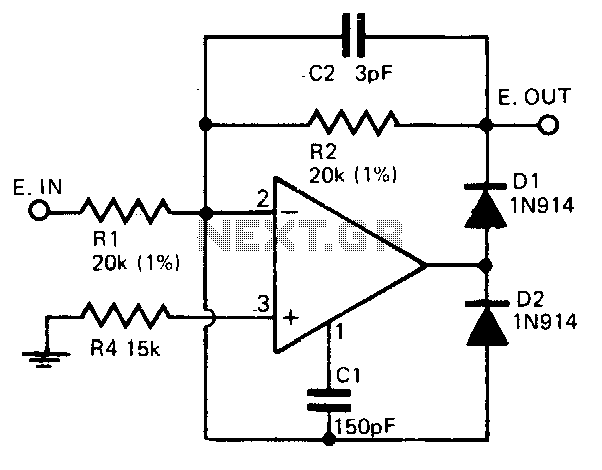
A precision half-wave rectifier utilizing an operational amplifier will achieve a rectification accuracy of 1% from DC to 100 kHz.
A precision half-wave rectifier circuit is designed to convert an AC signal into a unidirectional output while maintaining high accuracy in the rectification process. This is achieved through the use of an operational amplifier (op-amp), which enhances the performance of traditional rectifiers by minimizing voltage drops and improving linearity.
In this configuration, the op-amp is employed to amplify the input AC signal during the positive half-cycle while effectively blocking the negative half-cycle. The circuit typically consists of the op-amp, a diode, and resistors that set the gain and establish the feedback loop. The diode is placed in the feedback path of the op-amp, allowing current to flow only during the positive half of the input waveform.
The precision of the rectifier is largely attributed to the characteristics of the op-amp, which can provide a gain that compensates for the forward voltage drop of the diode. This results in an output that closely follows the input signal for the positive half-cycles, achieving the stated rectification accuracy of 1% over a frequency range from DC to 100 kHz.
To ensure optimal performance, careful selection of the op-amp is crucial, as parameters such as bandwidth, slew rate, and input offset voltage can significantly impact the rectification accuracy. Additionally, the circuit layout should minimize parasitic capacitances and inductances to maintain fidelity at higher frequencies.
Overall, this precision half-wave rectifier design is particularly useful in applications requiring accurate signal processing, such as in measurement systems, signal conditioning, and data acquisition, where precise representation of the input signal is essential.Precision half wave rectifier using an operational amplifier will have a rectification accuracy of 1% from dc to 100 kHz.
A precision half-wave rectifier circuit is designed to convert an AC signal into a unidirectional output while maintaining high accuracy in the rectification process. This is achieved through the use of an operational amplifier (op-amp), which enhances the performance of traditional rectifiers by minimizing voltage drops and improving linearity.
In this configuration, the op-amp is employed to amplify the input AC signal during the positive half-cycle while effectively blocking the negative half-cycle. The circuit typically consists of the op-amp, a diode, and resistors that set the gain and establish the feedback loop. The diode is placed in the feedback path of the op-amp, allowing current to flow only during the positive half of the input waveform.
The precision of the rectifier is largely attributed to the characteristics of the op-amp, which can provide a gain that compensates for the forward voltage drop of the diode. This results in an output that closely follows the input signal for the positive half-cycles, achieving the stated rectification accuracy of 1% over a frequency range from DC to 100 kHz.
To ensure optimal performance, careful selection of the op-amp is crucial, as parameters such as bandwidth, slew rate, and input offset voltage can significantly impact the rectification accuracy. Additionally, the circuit layout should minimize parasitic capacitances and inductances to maintain fidelity at higher frequencies.
Overall, this precision half-wave rectifier design is particularly useful in applications requiring accurate signal processing, such as in measurement systems, signal conditioning, and data acquisition, where precise representation of the input signal is essential.Precision half wave rectifier using an operational amplifier will have a rectification accuracy of 1% from dc to 100 kHz.
